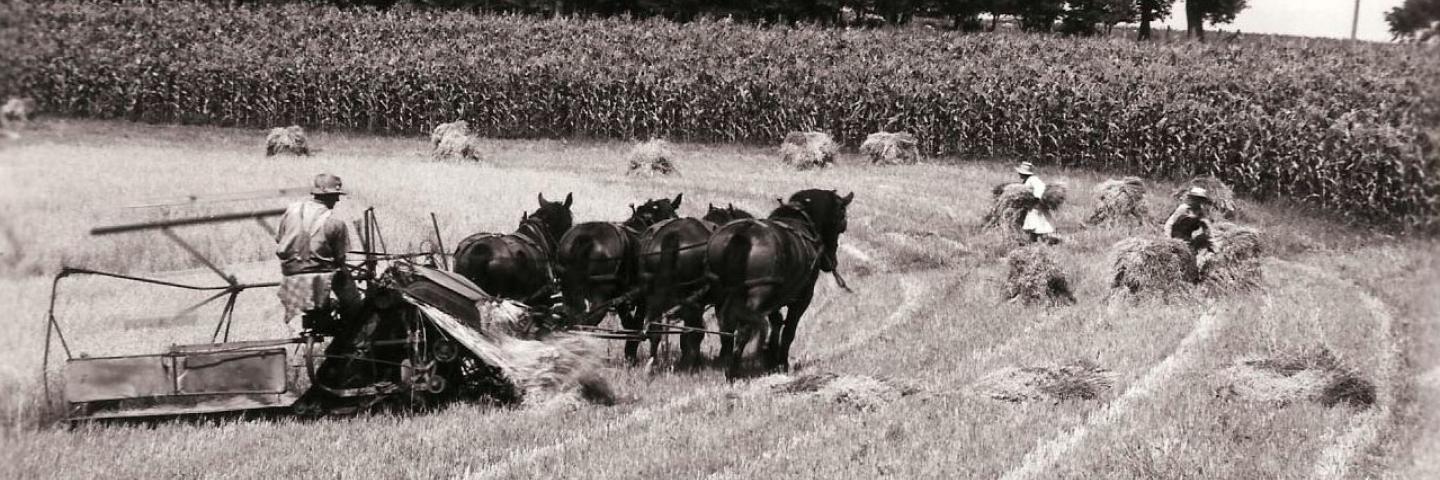90 Years of Conservation

Helping People Help the Land isn’t just a tagline for the Natural Resources Conservation Service (NRCS), it is the heart of the agency and staff.
In the middle of the dirty thirties at the height of the dust bowl, Congress passed public law 74-46 citing “the wastage of soil and moisture resources on farms, grazing, and forest lands” and established the Soil Conservation Service (SCS). On April 27, 1935, SCS became a permanent agency in the United States Department of Agriculture (USDA). In 1994, Congress changed the name of SCS to Natural Resources Conservation Service (NRCS) to better reflect the broadened scope of the agency’s conservation work.
Over the past 90 years, NRCS has worked with farmers, ranchers, foresters, and landowners to reach their conservation goals. The passion and dedication of the NRCS staff has been essential in completing millions of conservation plans.
The first Chief of SCS, Hugh Hammond Bennett, also known as the “Father of Soil Conservation” said it best: “In this democracy, national action to conserve soil must be generated by these millions of land users. If they are active and willing participants in such a movement, it will endure; otherwise, it will fail.”
NRCS relies on partnerships to reach millions of land users in the United States and around the world. NRCS Minnesota is fortunate to have robust partnerships providing conservation plans and facilitating training. One of our partners is the Minnesota Board of Water and Soil Resources (BWSR). While speaking with BWSR Executive Director John Jaschke, he said “For 90 years, NRCS has empowered land stewards across the country to preserve our invaluable natural resources. Here in Minnesota, NRCS is an essential partner in carrying out BWSR’s mission to improve and protect the state’s water and soil resources by working in partnership with local organizations and private landowners. We hear frequently from landowners that a combination of NRCS and state funding is a driving factor in their decision to pursue conservation practices that make our water cleaner and our soils healthier. The results of this collaborative approach can be seen in the numerous restored wetlands, conservation easements and other beneficial practices implemented throughout Minnesota.
Celebrating 90 years of NRCS is about more than marking a milestone — it’s about recognizing our shared vision for locally-led conservation. NRCS and its outstanding leadership and staff have built a legacy of meaningful collaboration that delivers on-the-ground results. We look forward to continuing to work together to support farmers and communities across the state.”
Another leading partnership for locally lead conservation is the Minnesota Association of Soil and Water Conservation District (MASWCD). Their partnership assists NRCS with ensuring that taxpayers’ dollars are applied on conservation practices at a local level on local priorities. In talking with MASWCD Executive Director LeAnn Buck, she said “NRCS’s 90th Anniversary is a testament to the agency’s mission and their dedicated resource professionals with helping producers address their resource needs. This milestone commemorates the collaboration and the ongoing impact of locally led conservation efforts.”
For 90 years NRCS has been the leading technical agency supporting and assisting land users with their conservation needs. SCS Chief, Hugh Hammond Bennett said, “From every conceivable angle – economic, social, cultural, health, national defense – conservation of natural resources is an objective on which all should agree.”
Learn more about NRCS History at nrcs.usda.gov/about/history.

